In Minecraft, digging for valuable resources like diamonds, iron, and redstone is one of the most important activities. With the right mining techniques, you can extract resources more efficiently and quickly improve your tools. Since the early versions, the search for diamonds has been crucial for progressing in the game. They allow you to significantly upgrade both your tools and armour. However, there are now many other raw materials that you should keep an eye out for. A mine is perfect for occasionally digging for blocks. But what is the best way to go about it?
In this post, we take a closer look at various mining techniques. Since many fundamental aspects have changed since the 1.18 update, this can be confusing for returning players. Even seasoned veterans can benefit from a refresher. So, let’s dig together into the depths of Minecraft’s overworld!
Minecraft World Structure and Heights for Optimal Ore Mining
Minecraft is now over 15 years old, so it’s no surprise that some aspects have fundamentally changed. The last major change related to mining was introduced with the “Caves & Cliffs” update and version 1.18. With the introduction of the update, the height of the world was adjusted. It can now be generated from 320 blocks upwards and -64 blocks downwards. This also resulted in a significant change in ore distribution. Additionally, a new block called Deepslate was added from height 0, making the transition underground even more distinct.
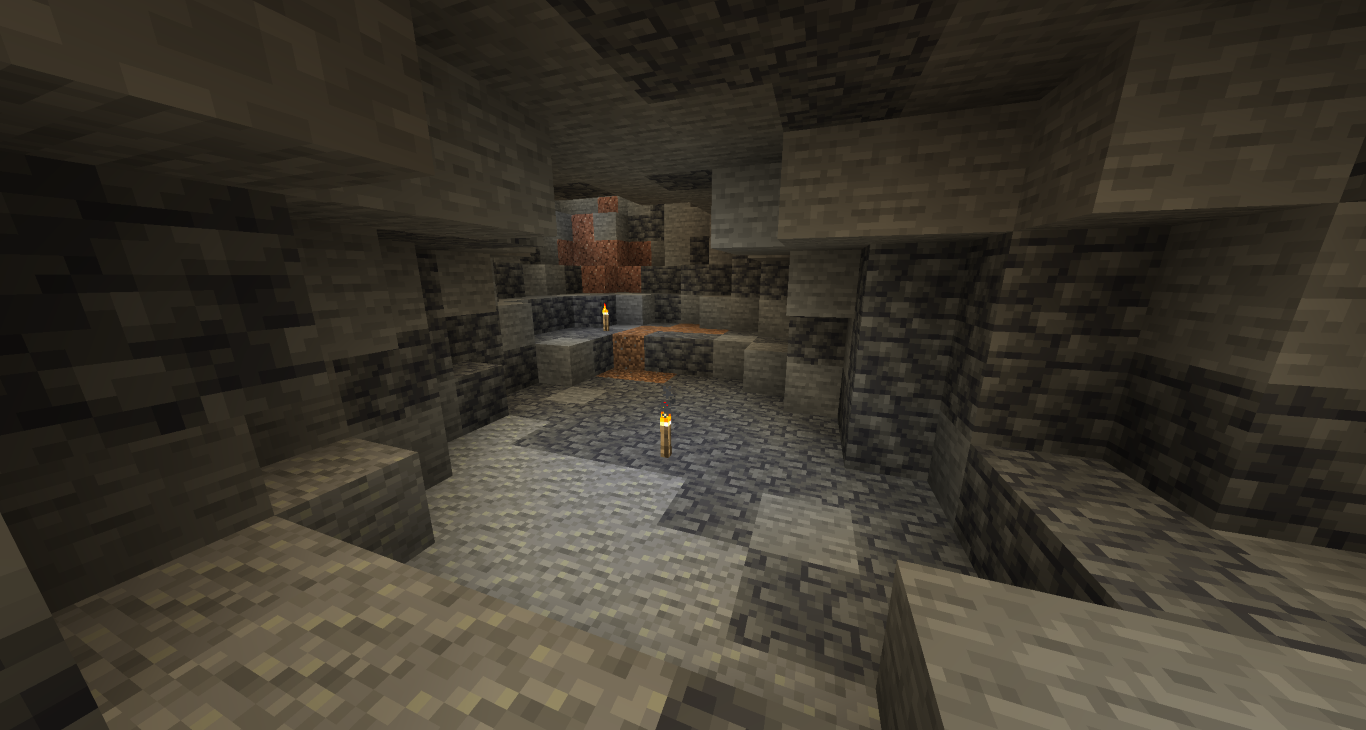
Height is particularly important in mining because it determines where certain ores can be found. In the Java version, you can display the coordinates using F3. In the Bedrock edition, this is directly integrated and displayed normally. Use this feature to prepare for work in the mine.
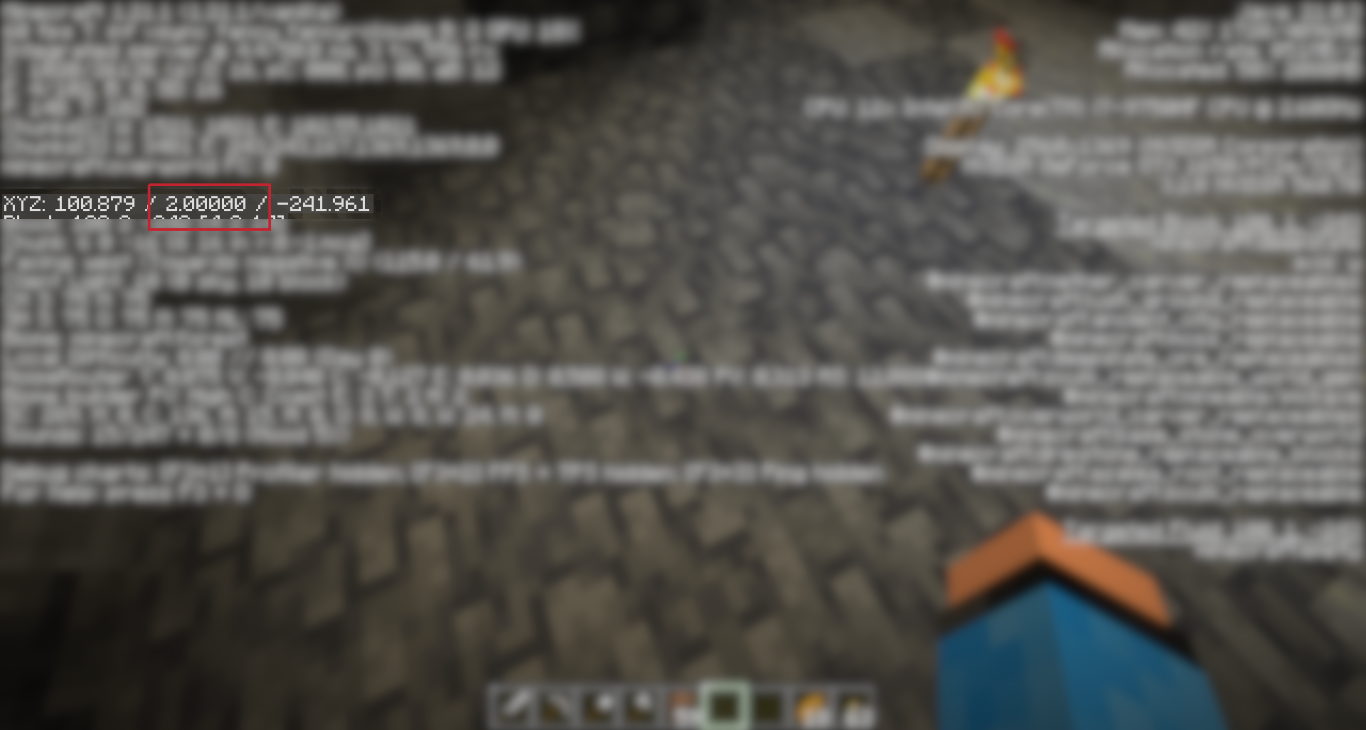
Minecraft Ores: Distribution, Ideal Heights, and Uses
Of course, you should also know what you actually want to find underground. Diamonds are one thing, but there are many other raw materials that are important. Therefore, we provide you with a compact overview of all the ores you can mine!
Coal
- Use: Torch, Furnace
- Height: 0 to 320
- Ideal Height: 136, 95
- Biomes: Everywhere
Copper
- Use: Copper Blocks, Telescope, Lightning Rod, Brush
- Height: -16 to 112
- Ideal Height: 43
- Biomes: Everywhere, more common in Dripstone Caves
Iron
- Use: Tools, Armour, Rails, Anvil, Hopper, etc.
- Height: -64 to 72 / 80 to 320
- Ideal Height: 14, 232
- Biomes: Everywhere
Gold
- Use: Tools, Armour, Clock, Trading with Piglins
- Height: -64 to 32
- Ideal Height: -16
- Biomes: Everywhere, more common in Badlands
Lapis Lazuli
- Use: Dye, Enchantment
- Height: -64 to 64
- Ideal Height: -2
- Biomes: Everywhere
Redstone
- Use: Redstone
- Height: -64 to 16
- Ideal Height: -58
- Biomes: Everywhere
Diamonds
- Use: Tools, Armour, Armour Trims
- Height: -64 to 16
- Ideal Height: -58
- Biomes: Everywhere
Emerald
- Use: Trading with Villagers
- Height: -16 to 320
- Ideal Height: 85, 236
- Biomes: Everywhere, more common in Mountain Biomes
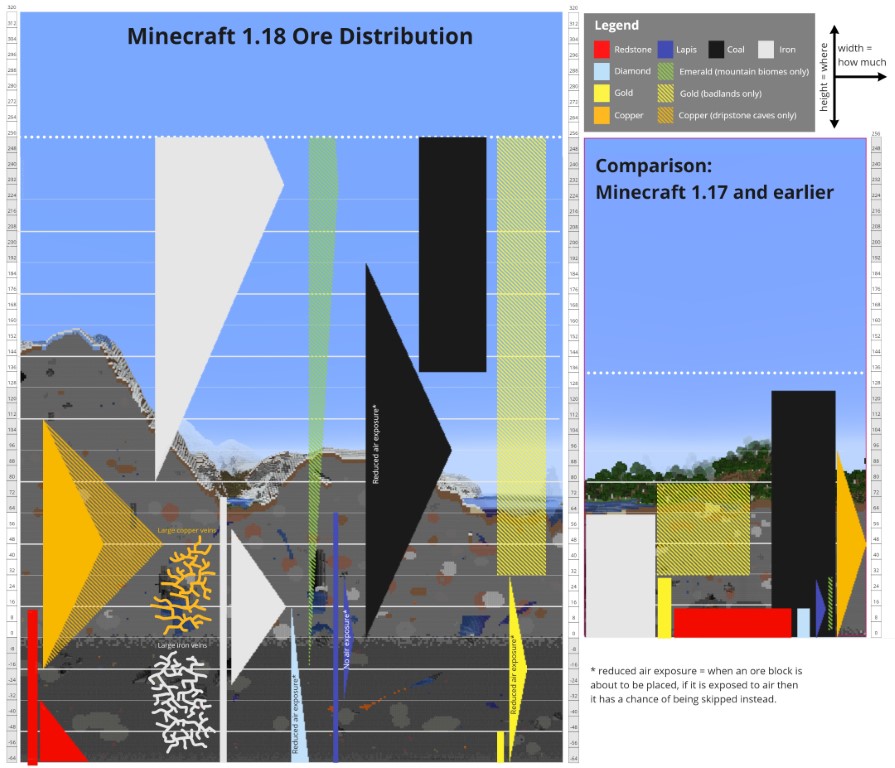
Ore Veins: Both iron and copper can appear in so-called veins. This means that the ores stretch over many blocks. Here you can sometimes mine over several hundred ores! Copper is often recognized by granite, while iron is associated with tuff.
Mining Techniques in Minecraft: Strip Mining, Branch Mining and More
Now, hopefully, you know exactly where to find specific raw materials in your Minecraft world. Height is especially important if you want to mine selectively. This gives you the best chance of collecting important resources. If you want a height where all resources are possible, then height 8 is a good starting point! Otherwise, you can simply follow the ideal heights mentioned above if you are looking for specific resources.
Minecraft Mining on Mountain Tops: Find Valuable Ores at High Altitudes
Yes, surprisingly, you don’t even have to go underground to obtain some of the resources. Because based on the distribution, you can see that some ores spawn higher up, and it might be worth going for a mountain hike. Especially in the “Stony Peaks” and “Jagged Peaks” biomes, you’ll find what you’re looking for! Here, you can find coal, iron, and emeralds. And the best part is, you can see them directly.
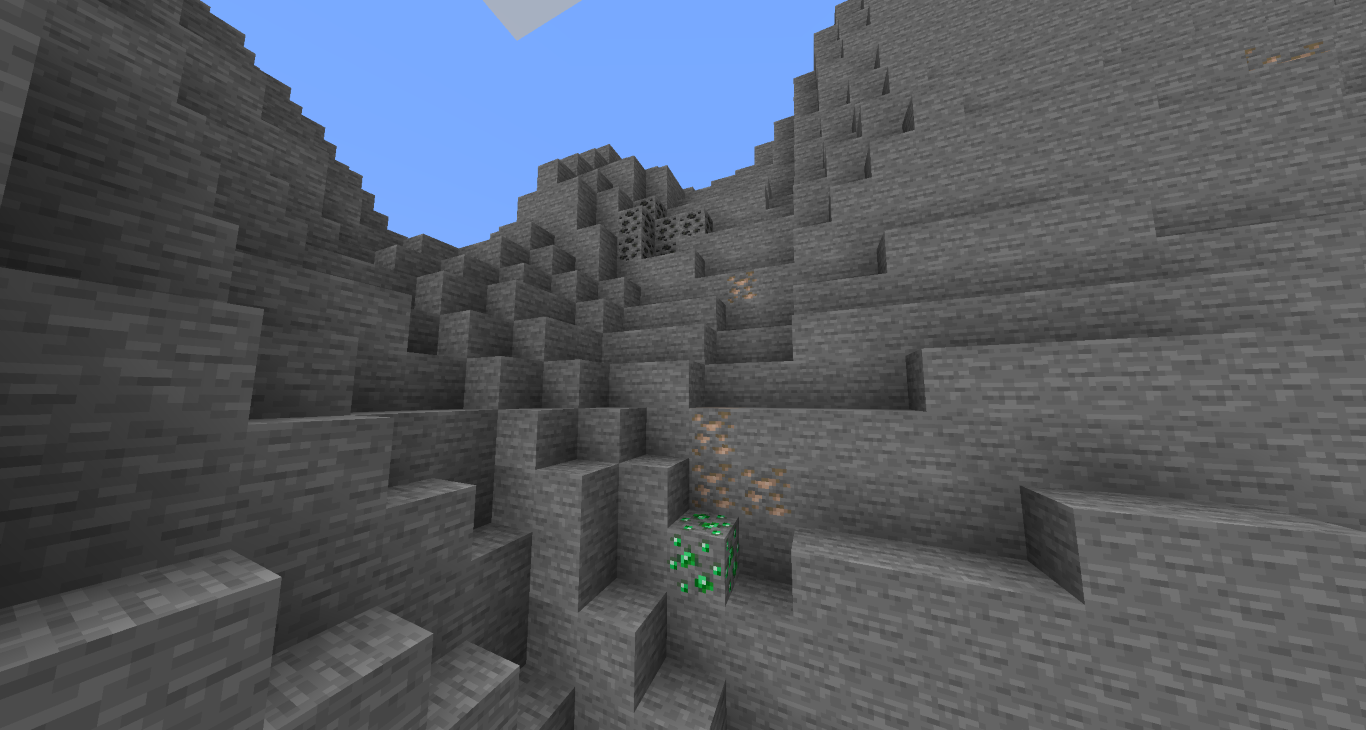
Cave Tours in Minecraft: Discover Ores in Natural Caves
If you don’t want to dig tunnels, you can simply take a normal cave tour. Here, you’ll be able to collect many ores that are exposed on your way down. However, from the graph above, you can see that some ores have reduced exposure to air, making this method significantly less efficient.
Minecraft Strip Mining: Effective Method for Maximum Ore Finds
The simplest method for mining is still strip mining. “Strip” in this context stands for “streak,” which represents the pattern of this method. Dig down to your desired level and proceed in tunnels with a gap of two blocks. This way, you’ll find virtually every ore in your vicinity. You can extend the tunnel indefinitely, but it’s worth creating a side passage every 200 blocks.
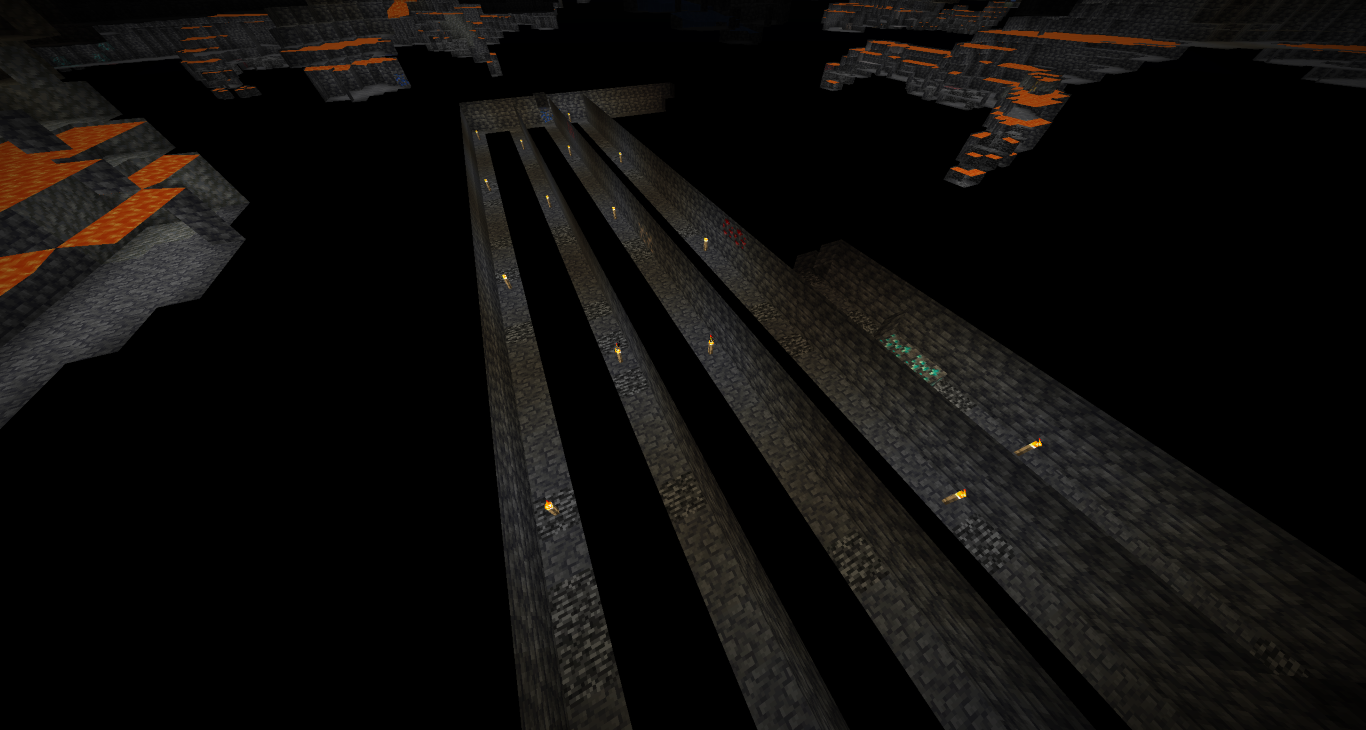
Minecraft Branch Mining: Preserve Your Tools and Find Ores
Branch mining works similarly but is a bit easier on your pickaxe. The word “Branch” can be translated as “branch,” like in a tree. Here, too, long tunnels are your starting point, but this time 12 blocks apart. In each tunnel, you then make a kind of “test dig” to the side, each 5 blocks and again with a gap of two blocks. This way, you expose virtually every block in the vicinity.
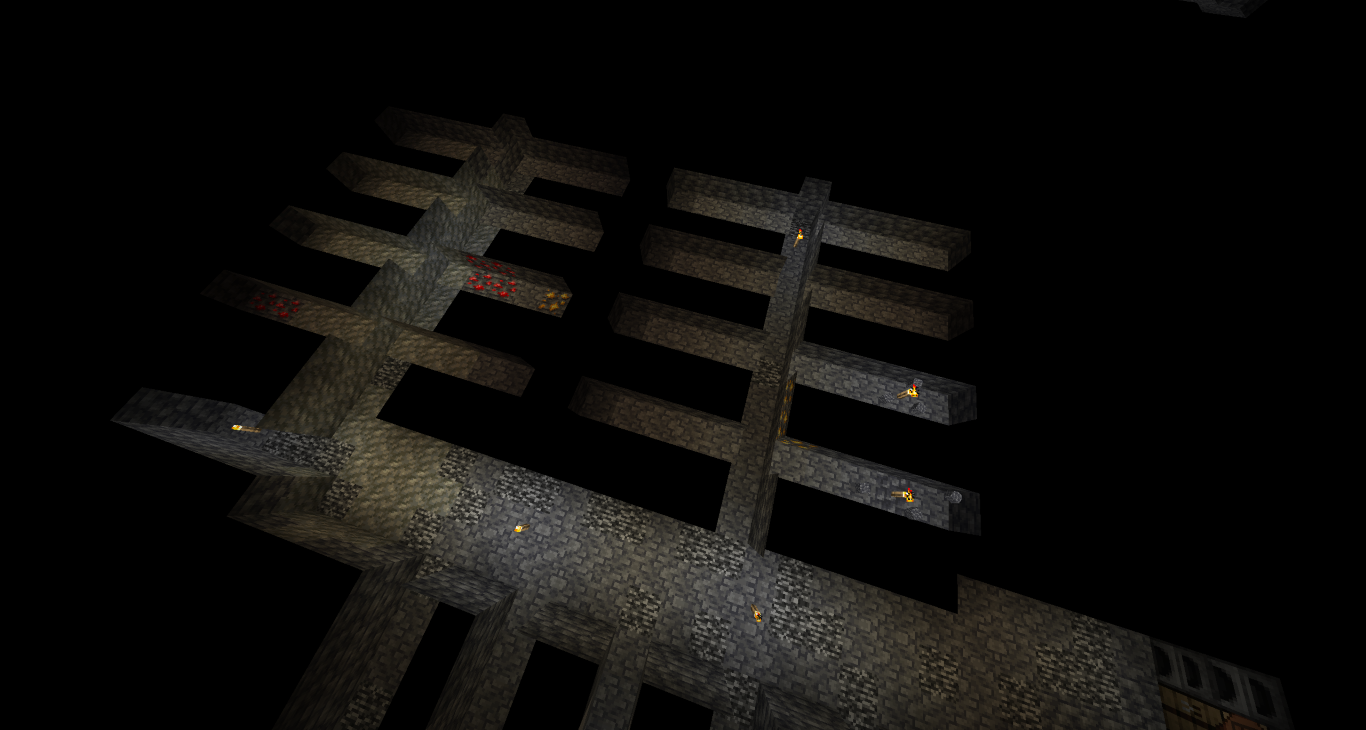
Minecraft Safety Measures: Tips for Safe Underground Digging
Finally, we want to provide you with some tips, tricks, and safety measures. This way, you can move safely underground!
- Never dig straight down! Otherwise, you might end up in lava or die from fall damage.
- Watch out for lava in walls or on the ground and bring a water bucket if necessary to turn lava into obsidian.
- Use torches not only as a light source but also for orientation. Always place them on the right to find your way. You can also use signs.
- Use the right pickaxe for mining ores. At least a wooden pickaxe for coal, a stone pickaxe for copper, lapis lazuli, and iron, and at least an iron pickaxe for gold, redstone, diamonds, and emeralds.
- Avoid digging near the “Deep Dark” biome to avoid waking the Warden.
- Build a small base underground to collect resources and smelt some of the ores.
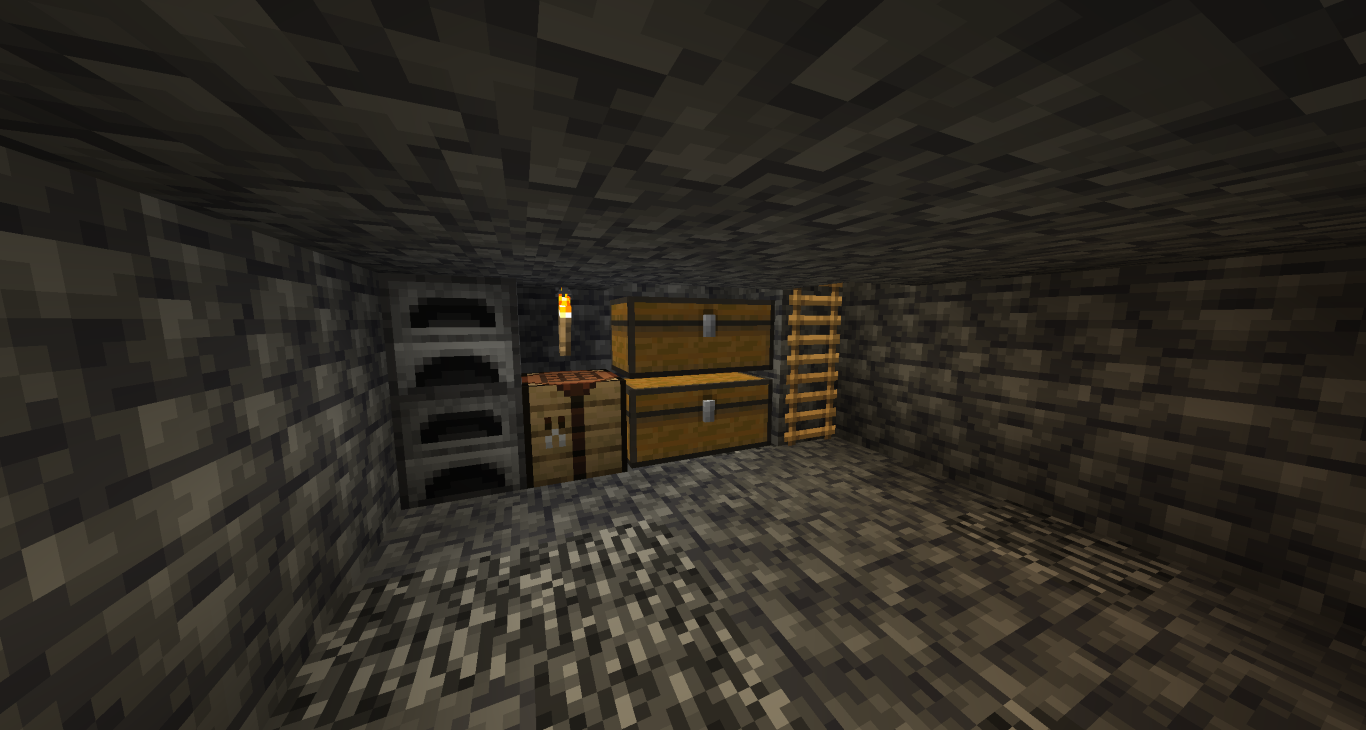
Conclusion: Why Efficient Mining Techniques in Minecraft Are Crucial
The “Mine” in Minecraft is important for a reason. Underground, you can find a lot of important resources, from redstone to valuable diamonds. Therefore, targeted excavations are one of the best ways to obtain these resources. Use one of the mentioned options to dig out a large mine. Efficient resource management gets even better when you can do it on your own server. Rent your Minecraft server and control your environment like never before! Your fellow players will surely help you with digging. You can also share or trade resources with each other.




